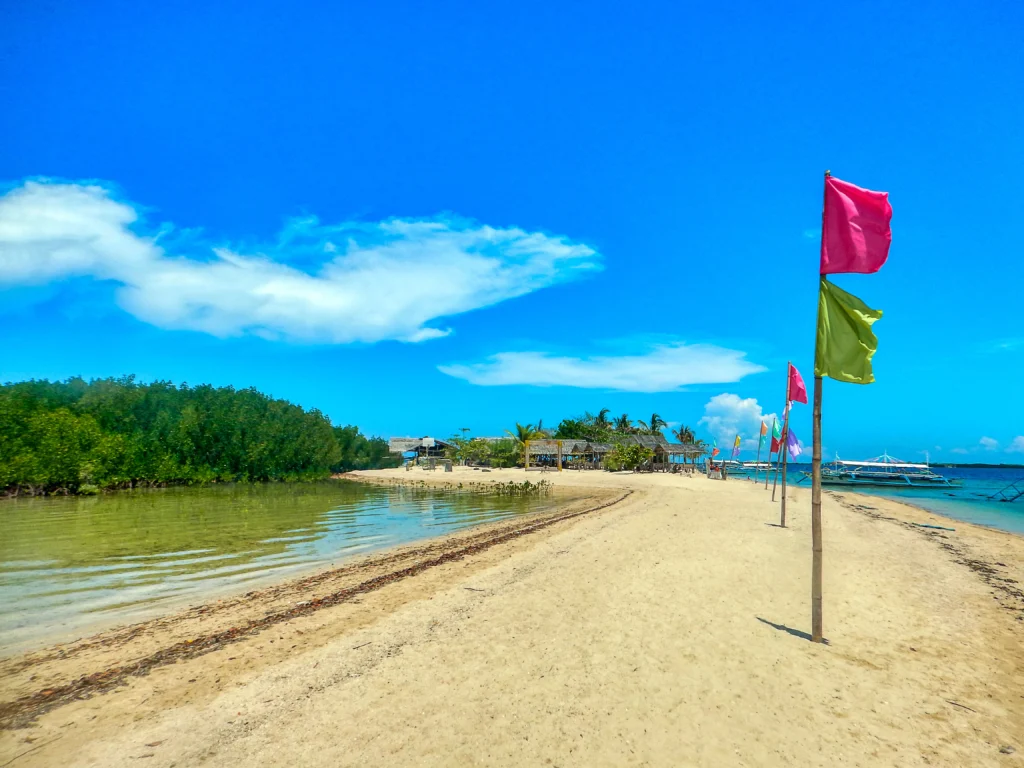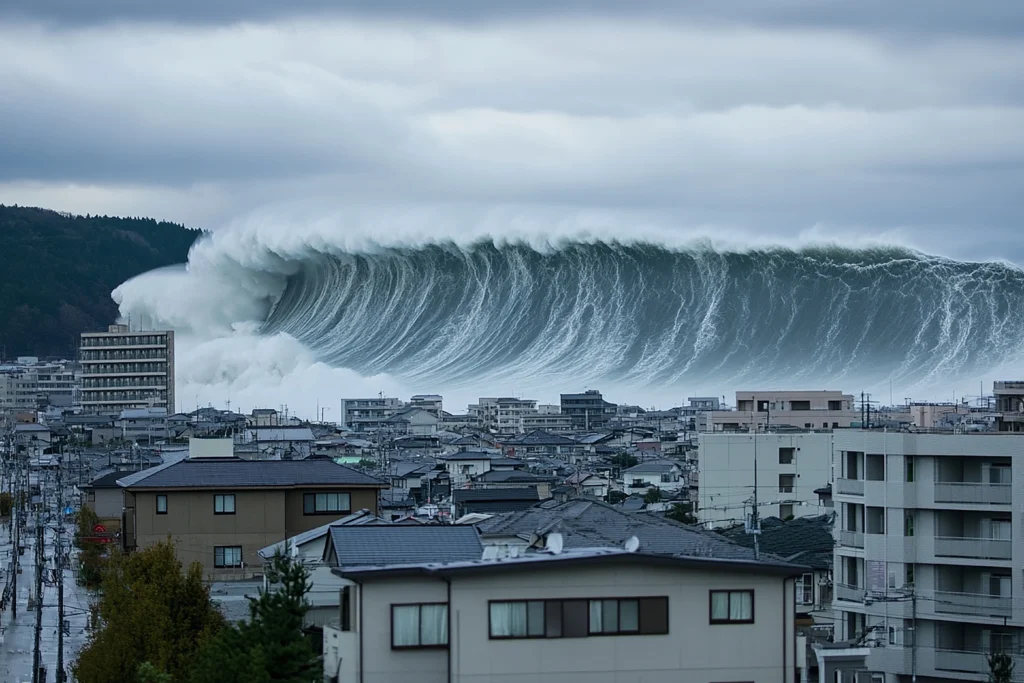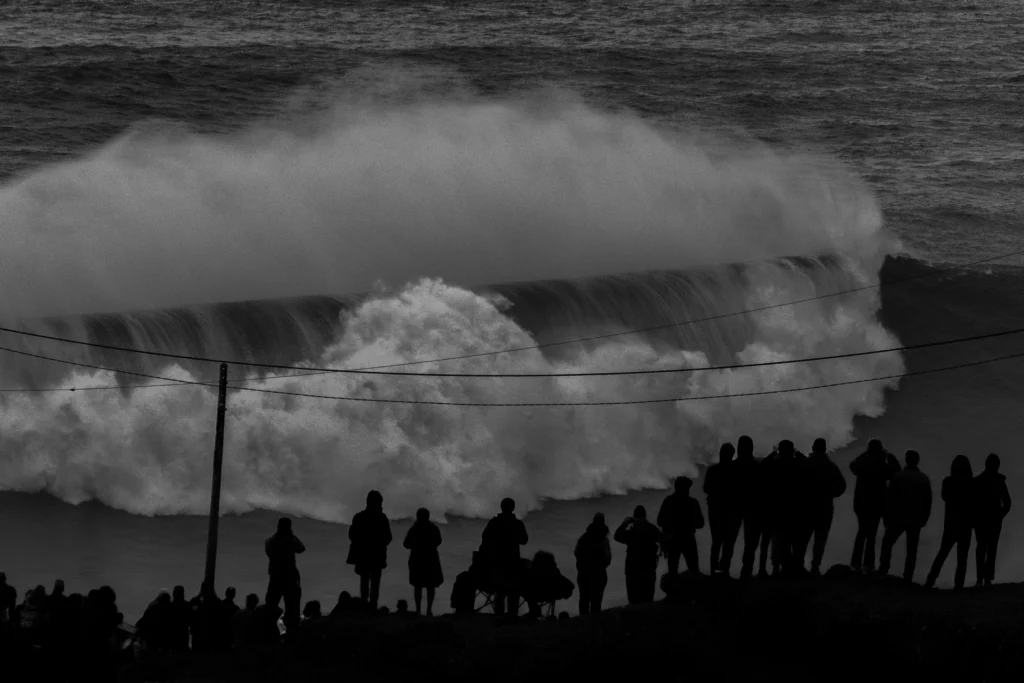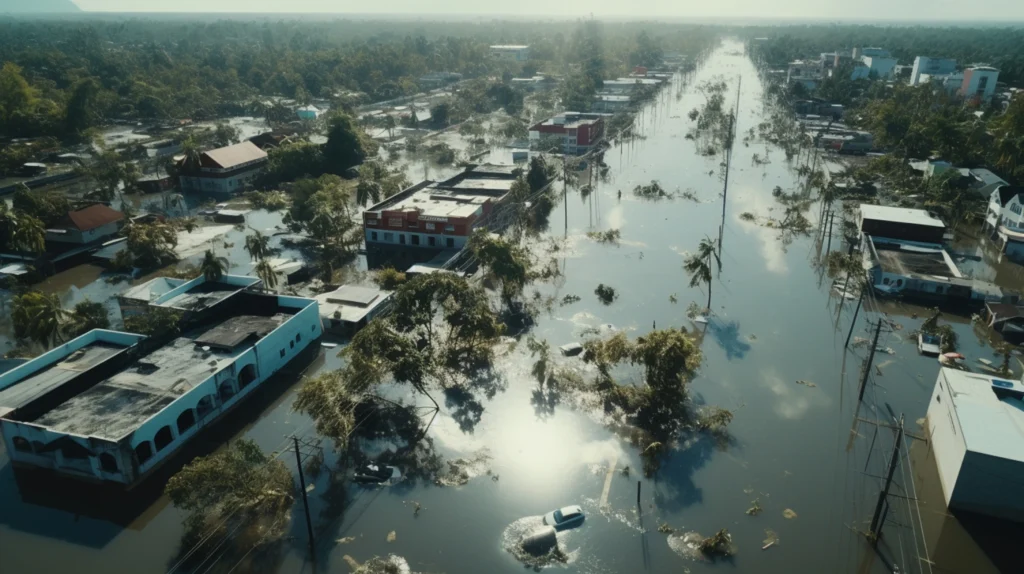A powerful 7.1 magnitude earthquake struck near Tonga, triggering a tsunami warning and raising concerns for coastal communities. The earthquake, which occurred northeast of Tonga’s main island, has put the Pacific nation on high alert as authorities monitor the situation closely.
Tonga, a country highly vulnerable to seismic activity and tsunamis, is no stranger to natural disasters. In 2022, the Hunga Tonga-Hunga Haʻapai volcanic eruption caused widespread destruction, reminding the world of the devastating power of such events. Now, with the latest earthquake shaking the region, residents and officials are bracing for potential impacts.
In this article, we’ll break down what happened, the risks involved, and how Tonga is preparing for a possible tsunami. Stay informed as we cover all the essential details surrounding this developing situation.

The Earthquake That Triggered the Tsunami Alert
Tonga was shaken by a powerful 7.1 magnitude earthquake, prompting immediate tsunami warnings across the Pacific region. The seismic event occurred early Monday local time, sending shockwaves through the island nation and raising concerns about potential coastal flooding.
Location & Magnitude: Where Did It Strike?
The United States Geological Survey (USGS) reported that the earthquake’s epicenter was located approximately 100 kilometers (62 miles) northeast of Tonga’s main island, Tongatapu. The quake struck at a depth of 16 kilometers (10 miles) beneath the ocean’s surface, a relatively shallow depth that increases the likelihood of tsunami generation.
Tonga, situated in the Ring of Fire, is frequently affected by seismic activity due to its location along tectonic plate boundaries. This latest quake is a stark reminder of the region’s ongoing vulnerability to natural disasters.
Depth & Distance: Why It Matters
The depth and location of an earthquake play a crucial role in determining the severity of a tsunami threat. In this case, the shallow depth of 16 km made it more capable of displacing water and creating significant waves.
- Shallow earthquakes (less than 70 km deep) tend to cause more damage and have a higher tsunami potential.
- Deep earthquakes (greater than 300 km) usually have a weaker surface impact and a lower chance of generating a tsunami.
With the epicenter being just 100 km from the Tongan coast, authorities had to act swiftly in assessing potential risks to coastal populations.
Comparison to Past Earthquakes in Tonga
Tonga has a history of devastating earthquakes and tsunamis, making this recent event a cause for concern. Some past significant seismic events include:
- The 2022 Hunga Tonga-Hunga Haʻapai volcanic eruption & tsunami, which caused widespread destruction and affected communication networks across the region.
- The 2009 Samoa-Tonga earthquake (8.1 magnitude), which triggered a deadly tsunami that reached as far as American Samoa and claimed over 190 lives.
- Frequent undersea earthquakes, which often lead to minor tsunamis but still pose threats to local communities.
With such a history, Tonga remains highly vulnerable to seismic disasters, emphasizing the importance of immediate response measures and preparedness strategies.

Tsunami Warning and Potential Impact
Following the 7.1 magnitude earthquake near Tonga, the Pacific Tsunami Warning Center (PTWC) issued an immediate tsunami alert. Given Tonga’s history of powerful seismic activity and coastal vulnerability, officials closely monitored wave activity and urged residents to stay prepared.
Areas at Risk: Who Could Be Affected?
The tsunami warning extended to coastal communities within 300 kilometers (185 miles) of the earthquake’s epicenter. This included:
- Tonga’s main island, Tongatapu – Home to the capital city, Nukuʻalofa, and the country’s largest population center.
- Nearby island groups such as Haʻapai and Vavaʻu, which are particularly vulnerable to rising sea levels and wave surges.
- Other Pacific nations, including Fiji and Samoa, were placed on alert for potential wave activity.
While there were no immediate reports of damage, authorities warned that tsunami waves—even if small—could still pose risks to boats, coastal infrastructure, and low-lying areas.
Expected Wave Heights and Ocean Disturbance
Tsunami waves can vary in size depending on the strength and depth of an earthquake. In this case, scientists anticipated:
- Possible waves reaching up to 1 meter (3.3 feet) above normal tide levels in affected areas.
- Strong and unusual ocean currents, which could be dangerous for swimmers, fishermen, and boats.
- Multiple wave surges, with some waves arriving later than others, requiring prolonged caution.
Even relatively small tsunami waves can have devastating impacts on vulnerable coastal regions, especially in island nations like Tonga, where infrastructure is limited.
Authorities’ Response and Public Safety Measures
As soon as the tsunami warning was issued, local and international authorities took action:
- Tongan government officials advised residents in coastal areas to move to higher ground and stay tuned for further updates.
- The Pacific Tsunami Warning Center (PTWC) and local meteorological agencies monitored wave activity and provided real-time updates.
- Neighboring countries, including New Zealand and Australia, remained on standby to offer aid if needed.
Thankfully, as reports emerged, it appeared that the tsunami threat was not as severe as initially feared. However, authorities continued to stress the importance of staying alert for aftershocks and further ocean disturbances.

How People in Tonga Are Preparing
With a tsunami warning issued following the 7.1 magnitude earthquake, Tongan residents quickly mobilized to ensure their safety. Having experienced devastating natural disasters in the past, many people were well aware of the risks and took immediate precautions.
Evacuation Plans and Emergency Response
As soon as the tsunami warning was announced, authorities urged coastal residents to evacuate to higher ground. The government activated emergency response plans, which included:
- Evacuation routes marked in vulnerable coastal areas to guide people toward safer locations.
- Designated shelters and emergency centers, especially in Nukuʻalofa and other major settlements.
- Coastline patrols to warn people against staying near the water or attempting to retrieve belongings.
Many residents followed pre-established disaster preparedness protocols, ensuring a swift response to the warning.
Public Reactions: How Locals Responded
Tongan citizens, familiar with tsunami threats, responded quickly and efficiently. Common reactions included:
- Families gathering emergency supplies, such as food, water, flashlights, and first-aid kits.
- People moving inland, either on foot or by vehicle, following government advisories.
- Businesses and schools closing temporarily, prioritizing safety over daily activities.
Social media and local radio stations played a crucial role in spreading real-time information, helping people stay updated on the latest warnings and advisories.
Emergency Measures to Minimize Risks
Tonga’s disaster management authorities worked closely with international agencies to monitor the situation. Some critical safety measures included:
- Suspending ferry services and small boat operations to prevent maritime accidents.
- Urging residents to avoid low-lying coastal areas, as tsunami waves can arrive in unpredictable patterns.
- Ensuring hospitals and emergency responders were on standby in case of injuries or damage.
Thankfully, the swift response and preparedness of the Tongan people helped minimize panic and potential harm. However, officials continued to monitor aftershocks and secondary tsunami threats, ensuring that the nation remained vigilant.

The Vulnerability of Tonga to Natural Disasters
Tonga, a small Pacific island nation, is no stranger to natural disasters. Due to its geographical location, it faces constant threats from earthquakes, tsunamis, volcanic eruptions, and cyclones. The recent 7.1 magnitude earthquake and tsunami warning serve as yet another reminder of the country’s ongoing exposure to extreme natural events.
Frequent Earthquakes and Tsunamis: A Major Threat
Tonga is situated along the Pacific Ring of Fire, a region known for intense seismic and volcanic activity. This area accounts for about 90% of the world’s earthquakes and 75% of the world’s active volcanoes.
- Tectonic Activity: Tonga lies on the boundary of the Pacific and Indo-Australian tectonic plates, which frequently cause strong earthquakes and undersea disturbances.
- Underwater Earthquakes & Tsunamis: Many of Tonga’s earthquakes occur offshore, which increases the risk of tsunami formation.
- Past Incidents: The 2009 Samoa-Tonga earthquake (8.1 magnitude) caused a deadly tsunami, killing over 190 people across the Pacific region.
Given these conditions, Tonga remains one of the most vulnerable nations to seismic disasters.
The 2022 Hunga Tonga-Hunga Haʻapai Volcanic Eruption and Tsunami
One of the most devastating recent disasters in Tonga’s history was the January 2022 eruption of the Hunga Tonga-Hunga Haʻapai underwater volcano. This event:
- Caused a massive tsunami that flooded coastal villages, destroyed homes, and severed communication lines.
- Generated a shockwave that circled the Earth multiple times, proving its extreme intensity.
- Led to widespread ashfall and contamination of drinking water, worsening humanitarian conditions.
The 2022 disaster was a wake-up call for Tonga, emphasizing the need for better early warning systems and disaster preparedness measures.
Preparedness and Mitigation Efforts
Despite its high exposure to natural disasters, Tonga has been working on improving resilience and response strategies. Some key initiatives include:
- Early warning systems – Enhanced tsunami and earthquake monitoring through seismic sensors and satellite data.
- Community disaster preparedness programs – Educating residents on evacuation routes, emergency kits, and response plans.
- Stronger infrastructure – Efforts to construct earthquake- and cyclone-resistant buildings to withstand future disasters.
- International assistance – Support from Australia, New Zealand, and the UN for relief efforts and disaster response training.
While these measures help reduce the risks, Tonga’s geographic location and small landmass mean it will always remain highly vulnerable to natural disasters. Continued investment in early warning technology, evacuation planning, and community awareness will be essential in protecting the nation from future threats.
What Happens Next? Monitoring and Updates
Following the 7.1 magnitude earthquake and tsunami warning near Tonga, authorities and international agencies continue to monitor the situation closely. While immediate threats may have subsided, aftershocks, secondary waves, and ongoing assessments remain a priority for officials and residents alike.
Ongoing Situation Reports: What Experts Are Saying
Seismologists and disaster response teams are actively analyzing data from the earthquake and its aftereffects. Key points of focus include:
- Monitoring for aftershocks, as large earthquakes often trigger smaller quakes in the hours or days that follow.
- Tracking ocean wave activity, ensuring that no delayed tsunami waves develop.
- Assessing structural damage, especially in coastal areas that may have experienced tremors or water surges.
The Pacific Tsunami Warning Center (PTWC) and Tonga Meteorological Service are providing real-time updates to ensure the safety of the affected population.
Resources for Live Updates: Staying Informed
For accurate and up-to-date information, residents and international observers can rely on the following sources:
- Tonga Meteorological Service (www.met.gov.to) – The official agency monitoring earthquakes, tsunamis, and weather conditions in Tonga.
- Pacific Tsunami Warning Center (PTWC) (www.tsunami.gov) – Provides global tsunami alerts and ocean monitoring.
- US Geological Survey (USGS) (earthquake.usgs.gov) – Updates on earthquake magnitudes, depths, and locations.
- Social media and local news outlets, including Radio Tonga, Matangi Tonga, and Pacific News agencies, which provide live reporting from the ground.
How to Help: Supporting Affected Communities
Even if the tsunami threat diminishes, disaster preparedness and relief efforts remain critical. People looking to help can consider:
- Donating to disaster relief organizations such as the Red Cross Pacific, UNICEF, or local Tongan charities that provide emergency supplies and aid.
- Raising awareness by sharing updates and safety guidelines on social media.
- Supporting Tonga’s long-term recovery efforts, including rebuilding infrastructure and improving early warning systems.
Tonga’s resilience in the face of natural disasters is strong, but ongoing support, monitoring, and preparation are essential for future safety. As updates continue to emerge, staying informed and prepared remains the best course of action for both residents and international allies.
Conclusion
The recent 7.1 magnitude earthquake near Tonga and the subsequent tsunami warning serve as stark reminders of the region’s vulnerability to natural disasters. Although the immediate threat has subsided, Tonga remains on high alert as authorities continue to monitor aftershocks and ocean activity.
Tonga’s resilience in the face of such challenges is commendable, with residents and officials taking swift action to minimize risks and ensure safety. However, given the nation’s location along the Pacific Ring of Fire, it is clear that continuous investment in early warning systems, disaster preparedness, and community education is vital for reducing the impact of future events.
As we monitor the ongoing situation, it’s essential to stay informed through reliable sources like the Pacific Tsunami Warning Center and local authorities. The global community can also play a crucial role by offering support, whether through donations, raising awareness, or contributing to Tonga’s recovery efforts.
Ultimately, the situation in Tonga highlights the need for proactive disaster management in the face of an increasingly unpredictable climate and seismic activity. By working together and remaining vigilant, we can help protect vulnerable communities from the devastating effects of natural disasters.
Stay safe, stay informed, and continue to support those in need as Tonga navigates this challenging time.
Table of Contents
https://fr.wikipedia.org/wiki/Tonga
Oreos Secure a Spot in Norway’s Doomsday Vault: A Sweet Legacy for the Apocalypse – trendsfocus